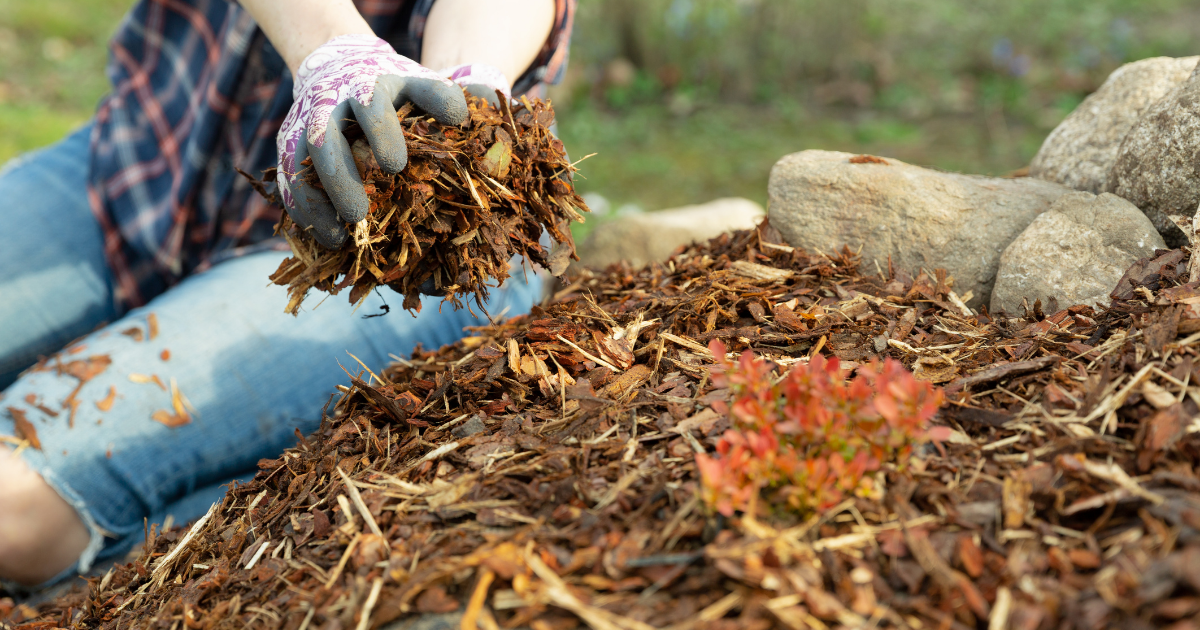DIY Mulching & Mulch Magic Giveaway

At Nevada Irrigation District, we strive to work alongside our community and stakeholders to conserve water. As our climate changes and California residents face an ongoing drought, we recognize the importance of implementing strategies to sustain this finite resource. One of the ways we aid in water preservation is by mulching the areas where we work. You, too, can save water by mulching the plant beds in your yard!
What exactly is mulching? Mulching includes spreading a thin layer of material around your plants to protect them from excessive temperatures and weather conditions while supplying them with nutrients. 2-3 inches of mulch is all you need to promote water retention, keep your soil moist for more extended periods, and save you water.
While you can buy mulch at your local home improvement or gardening store, making your own mulch is a cost-effective and sustainable way to use up waste from your household. Read along to learn about making mulch, the best materials to use, and a Mulch Magic Giveaway here at NID.
How to Make Your Own Mulch
Making your own mulch is quite simple - all you need is non-toxic organic matter. Using any of these materials on their own or in combination will yield great results for your DIY mulch:
- Wood chips (i.e., branches or bark)
- Grass clippings
- Compost
- Leaves, pine needle, and straw
- Shredded paper (i.e., newspaper or office paper)
The options are endless! Keep in mind that some organic matter contains more nutrients than others; natural earth materials like leaves and grass clippings are great for promoting nitrogen-rich soil, while shredded paper will effectively retain moisture. Therefore, it is essential to understand what your plants need to grow successfully.
Below, we will dive into three different types of mulch that you can make on your own, noting the benefits and uses of each one.
Wood Chips: Great for Established Plants
Wood chips are an excellent material for your mulch and are a great way to utilize the branches and bark that you may have from a recently pruned or removed tree. Store-bought wood mulch is frequently processed into identical pieces with little variation in size or chemical composition. Homemade wood chips result in various sized pieces that will break down at different times, promoting more diverse soil.
To create wood chip mulch, you can rent a wood chipper for an average of $69-$125 a day, a worthwhile investment since mulch may cost $15-$65 per yard. Be sure to follow the instructions provided by the equipment manufacturer to convert your tree materials into homemade mulch. To further increase the nutrients of your mulch, mix in grass clippings from your recently mowed lawn, pine needles, and leaves.
Compost: An Easy Home-Garden Option
Compost is an excellent option for your homemade mulch, especially if your household already participates in composting. Utilizing your household waste for plant mulching is a wonderful way to implement more sustainable practices. Compost helps the soil layer stay cooler, presenting a great option during the hotter months of the summer, where water evaporates more quickly.
The simplest compost mulch consists of plant garden waste like leaves, ripened food scraps, and other decomposing organic matter. These materials will naturally break down and release nutrients into the soil. When your compost pile is visibly dark and broken down, it is ready to be used as mulch.
Leaves and Pine Needles: A Seasonal Specialty
Instead of throwing away the leaves that fall from your trees in late autumn, consider mulching them for your plants. Using leaves and pine needles is a terrific option for the winter months. The decomposition of leaves will provide your soil with nitrogen and nutrients, resulting in a productive garden for the spring.
Allow your leaves to dry out, and pass over them with a lawnmower a few times to break them down smaller. Raking through them will also prevent your leaves from clumping together and molding, resulting in an even decomposition that releases nutrients ready for soil absorption.
Benefits of Mulching and Mulch Magic Giveaway
There are several benefits to making mulch, from saving money to utilizing materials already present at your own home that would otherwise go to waste. With mulch, you have control over the nutrients that you are putting back into your soil and, in turn, the plants and produce that you grow.
In addition, mulching is an effective way to promote water conservation. The additional layer created by mulch results in slower water evaporation and helps your soil retain moisture, meaning you can water your plants less. View this pamphlet from the U.S. Department of Housing and Urban Development for more information on water conservation and mulching.
Do you currently not have available materials to make your own mulch? Are you looking for a simple way to ease into mulch making? At NID, we are hosting a Mulch Magic Giveaway. We will be providing our community members with organic mulch materials to bring home. Come to the Nevada County Fairgrounds with your shovels, container, truck, and tarp to cover your load while supplies last. We hope to provide you with the tools necessary to implement water preservation practices in your own home!
